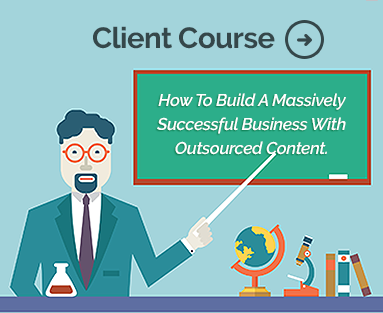Companies that blog receives 55% more visitors to their website than those that don’t. They also receive 97% more links to their website.
It’s clear that blogging is a vital part of SEO, but to get all the benefits it offers, you have to get it right. Not all blogs are created equal and when it comes to blogging for SEO one of the most important – and debated factors – is length.
So, how long should a blog post be? If you are wondering the answer to this question, you’re in the right place. Keep reading to learn about blog post length, what search engines like, and other blogging information that can ensure your site is an SEO success.
Does Length Really Matter?
The short answer is “yes.” Blog post length is important because it correlates to better rankings in all the big-name search engines (i.e., Google, Bing, Yahoo, etc.). While this correlation has been present for years, in 2019, there’s best practice evidence that shows longer posts are becoming more important for a higher ranking.
For Google blog posts, the average word count for the top-10 listed blogs has increased. In 2017, it was just 1,140. Now, it’s 1,285.
The algorithms used by Google (and other search engines) ranks the highest-quality content at the top of the page because it wants to provide the best results possible. The logical conclusion has been made that longer content is more thorough, which means it’s more likely to be useful to the target audience.
While length matters, it’s not the only factor to consider. Keep reading to learn more about content length, SEO, and how to optimize your blogs to achieve the top spots in Google search.
Factors That Can Impact the Length of Your Content
If you are trying to determine the proper length for your content, there are several factors that will impact the result. Learn about these factors here.
Search Intent
If you speak to SEO experts, each one will have a different opinion regarding the right length for your content. Some will say that 300 to 500 words are best, while others may say that 2,000 is the minimum word count for any blog.
To determine how long your content needs to be, you need to find out what’s considered typical for your industry. Also, consider what fulfills the intent of the user’s search query.
For example, does the intent behind your keyword require you to write long-form content to fully answer it? If so, write a long-form post.
However, you may answer the query better with images. If that’s the situation, optimize your images for SEO and reduce the total words on your page.
A good way to figure out your searcher’s intent is by searching for keywords. The word you are searching may differ significantly from how Google spiders interpret it.
You can perform a SERP analysis to see if Google has found the content valuable for the selected keywords. If Google puts a value on a blog, look at the content. Using a SERP analysis can help you learn a lot about what content will succeed in search results for a specific keyword.
Quality vs. Quantity
While the length of your content matters, and is something you need to consider, the quality of your content can’t be ignored. There are many who try so hard to reach a specific word count, they don’t think about what they are writing. This leads to unrelated “fluff” that offers no value to the end-user.
The end goal of any content is to provide the information a user wants. If it can be said in 300 words, great; however, if 2,500 words are needed, that’s fine too. Remember, the ultimate goal is to meet the needs of the end-user.
When creating content, make sure you are consistent and innovative. By creating valuable and unique content, you have the chance to build trust, brand awareness, authority, and a rapport each time someone lands on your page.
Remember, your writing style will impact the length of your content, too. Some blogs need to be short and to the point. Others are more interactive and conversational, resulting in the content being longer.
Target Audience
As mentioned above, who you are targeting impacts the content you create.
Similar to any quality web content, you need to have a goal. Get to know your target audience. These are the people who will search for and read the content you create.
It’s also necessary to think about a person’s level of intent. Are they looking for basic discovery information? Do they want to buy something with as few clicks as possible?
The content you create needs to reflect your end-user and the different stages of user intent.
Quality content is mapped out before it’s created. It needs to connect your websites and business’s goals and the content you publish and the goals of users.
It’s More Than Words
Remember, your content’s quality goes beyond what you write. The best content connects everything using respectable writing, research, and a focus on the user’s intent.
Even if you have an amazing video to post, you need to add well-written content that explains what the video is about. Also, any additional resources that can improve the content and help the user more.
As a content strategist, your ultimate goal is to provide the best information, in the right format, on the proper platform.
There’s some content that is easier to read and digest when written. However, other content is better suited to visual consumption, which is when video and images are necessary. In some situations, audio files are the best media option.
Writing What You Need
A sound bit of advice when creating content for your website is to write as much as you need, but no more. The word count of your content should represent how long it takes you to make your point.
If you “fluff up” a page to reach a certain, arbitrary word count requirement, your readers will know. Not only that, but Google, will too.
Shorter copy can still rant. There’s no point in adding more content “just in case.” As mentioned above, you need to focus on answering the search query.
When creating content, think about the following to determine if more words are needed:
- Did you say everything you could?
- Did you overcome all possible objections?
- Have you showcased your service or product?
- Is the usage of your key phrase seamless?
- Does your copy encourage readers to take the next step?
- Have you connected with your reader?
If you can answer “yes,” your job is done. It’s that simple.
Make the Form Match Your Word Count and Content
There’s not a single winning formation when it comes to your webpage layout. When discussing content form, it includes:
- Total word count
- Meta and title tags
- Content structure
- HTML tags
- Piece tone
If you know what your content is trying to communicate and the search the content satisfies (discussed above), you can start to develop your page’s form around the content. If you have a technical article about stock trades, dive into the facts immediately.
If you have an entertaining listicle, you’re catering to an audience that’s more forgiving if you have a slow start.
Google has made it clear: Write for users, rather than search engines. This is still some of the best advice regarding content, word count, and creating an amazing website.
When are Short Blog Posts Best?
The “ideal range” of words for a blog is confusing. While this is true, there’s a right time for short content, and a right time for long content.
Some benefits offered by creating shorter content include:
- Create it with ease more often
- It’s easier to read
- More content results in a larger footprint
Short content is typically thought of as between 300 and 500 words.
Shorter content is easier to create frequently. For many, being able to write a 1,000 (or more) word post each week isn’t possible. By focusing on shorter content, you are more likely to create a content creation schedule you can stick to.
Another benefit of shorter content is that it’s typically easier to read. Long-form content can compromise quality, which will hurt SEO and defeat why your content is created, to begin with.
If your strength isn’t writing, it’s a good idea to focus on creating more reader-friendly, short content pieces. When you post shorter content, you also get to post more, and focus on more topics.
Rather than focusing your time on creating a perfect post on one area of focus for your business, you can develop quick, short posts on several topics that are relevant. This helps you offer more to your readers.
While the benefits listed here are compelling, shorter content has also been proven more effective to sell a service or product or to get your readers to take a desired action.
Potential Drawbacks of Short Content
Just like anything else, there are also drawbacks of short content. These include:
- Search engines can’t discern context as easily
- Fewer ranking opportunities
- No opportunity to speak to readers on their level
While this is true, there are some instances when short posts are best.
When are Long-Form Blog Posts Best?
There’s a good reason that long posts get so much attention. When it comes to SEO, longer is better.
Some of the specific benefits of longer blog posts include:
- Readers stick around longer
- Search engines understand the intent and context
Longer content has better SEO performance because it provides search engines with more information about the post’s content. While content is still king – context is queen.
Longer content is more likely to be shared via social media, too. It’s also more likely to be linked to by other blogs, which improves SEO further.
Potential Drawbacks of Long-Form Blog Posts
Some of the potential negatives of long-form blog posts include:
- Inability to keep readers engaged
- Stronger writers needed to product content
While long-form content offers many benefits, there are also drawbacks. One main issue that bloggers have when writing long-form posts is keeping people engaged.
The average person reads only 25% of blog posts, which means they aren’t paying attention to all the content in a longer post. While this is true, you shouldn’t give up on using long-form content.
You can find success by using visuals such as GIFs, charts, infographics, and photos, which can help to hook your reader’s attention and keep them engaged until the end.
A downfall of long-form content for many is that you have to have strong writing skills. If writing isn’t your forte, you may have to find someone to create the long content for you.
How Long Should a Blog Post Be? It Depends
As you can see from the information here, when trying to figure out the answer to, “how long should a blog post be,” it really depends. There are several factors that impact how long your blog should be.
While some conclude that longer is always better, that’s not the case. As a result, take the information here and use it to find a “sweet spot” for your content and your audience.
If you help or information to ensure you get the perfect content for your site every time, contact us. We are content pros and can help ensure your news and goals are achieved.




Comments are closed.